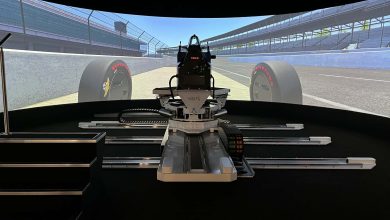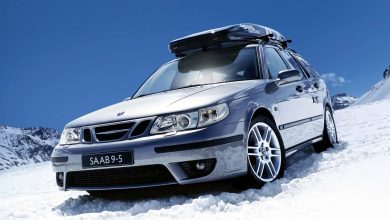The Colorado ZR2 Bison Has a High-Tech Suspension. Here’s How It Works

Multimatic has been making suspension components since before I was born—literally, since 1984. And they’ve done a damn good job. Red Bull won four consecutive Formula 1 titles running Multimatic’s Dynamic Suspensions Spool Valve (DSSV) dampers. Five major racing series have since adopted them as the standard. And these days, you’ll find DSSV dampers in production cars from Maranello to ‘Merica—in this case, the Chevrolet Colorado ZR2 Bison.
Believe it or not, the Colorado ZR2 was the first off-road vehicle to use Multimatic’s DSSV dampers back in 2017. Before that, they were reserved for sports cars. The Bison adds 12.2 inches of ground clearance and 35-inch off-road tires to the equation; Chevy engineers threw everything they had at this ZR2 for it to be the meanest, baddest, most capable truck in its class—DSSVs included.
The dampers basically work the same here as they do in sports cars: A pair of spring-loaded spool valves are forced through a chamber filled with pressurized hydraulic fluid, while adjustable orifices control the rate at which oil travels. But in order to account for the massive blows the ZR2’s suspension would be taking regularly during off-road use, Multimatic made a few tweaks.
The biggest change is to the bump stop, which is exclusive to the Bison model. Instead of traditional rubber bump stops that dish out as much force as the amount of pressure they take in, the Bison has custom hydraulic bump stops that manage rebound—Multimatic coined the term “Jounce Control.”
In simplest terms, these dampers absorb more and dispel less. Say you’re cruising through the Mojave at 40 miles per hour and you hit a huge rock. Rather than receiving a nasty blow to your backside and unsettling the truck’s suspension, as some lesser shock absorbers might, the hydraulic bump stops absorb all that pressure and send less of it back through the wheel on rebound.
When we say an off-roader ‘soaks up bumps,’ that’s almost literally what’s happening here.
Ford uses a similar suspension technology on the Ranger Raptor, though not as advanced. Fox’s ubiquitous Internal Bypass shocks have adaptive damping on compression with a clever valve system that sends fluid more freely through the shocks. It’s closer to the setup found on the standard ZR2.
But Fox’s hydraulics are fixed on rebound (at least on the Ranger, the F-150 Raptor R has new dual live valve shocks), and the shocks still have traditional rubber bump stops. Both result in less control than the Bison during high-speed desert runs, at least in theory.
Robert Teseo, a Vehicle Dynamics Engineer at Multimatic’s technical center, explains the basics well.
“We want to have something that is able to withstand all the aggressive environments of off-roading, so it’s able to maintain control and withstand all of the loads that come with that,” he notes. “But we also don’t want to compromise on-road handling or on-road comfort.”

In order to achieve that, Multimatic had four key goals in mind when making its DSSV dampers and hydraulic bump stops for off-road use:
- Minimize Body Motion
- Reduce Wheel Travel
- Reduce Peak Tire and Frame Loads
- Increase Energy Dissipation
The first two tenets are obvious when you get the truck out on a trail. The ZR2 Bison doesn’t have a ton of wheel travel like other off-roaders—some might describe it as “stiff” at slower speeds. But this truck was designed for high-speed off-road travel, and in doing so, it skips over rocks and dirt like a jet ski on a still lake. It takes a really nasty bump to upset the truck’s chassis.
That cushiness extends to the road. The suspension will just as quickly quash broken pavement as it would a rocky trail, and it barely shrugs at speed bumps. The only ding to ride quality (and cabin noise) comes from those huge tires—not unexpected for an off-roader of this caliber, though.
There’s more to the ZR2 Bison than just the suspension, though.


Speaking of those tires—they are downright ridiculous. They’re two inches bigger ‘round than the already huge 33-inch tires on the normal ZR2 and 1.2 inches thicker. Chevy actually had to shift the front axle forward a titch and push the offset outward by nearly an inch to account for the new rubber. The tires boost the ride height from 10.7 inches to 12.2 inches and increase the overall width of the truck by 2.1 inches. They also wrap around 17-inch beadlock wheels that are specific to the Bison.
The engine is the only area where I felt the ZR2 Bison could use… more. It’s the same turbocharged 2.7-liter four-cylinder found in every other version of the Colorado, and here it makes 310 horsepower and 430 pound-feet of torque.
Is it underpowered? Not necessarily. The four-cylinder has more than enough energy to pull the ZR2 out of a dig with decent speed. On the highway it shows some signs of struggle, but it still has more grunt than some of the naturally aspirated sixes in other trucks.
After a week of driving it, I’d say Chevrolet accomplished its goal. Using Multimatic’s clever “jounce control” technology and adding a bevy of off-road equipment uncommon for this segment, the Colorado ZR2 Bison is by far the most capable mid-size truck on the planet. Just don’t tell that to the good folks at Ford.
Read the full article here








